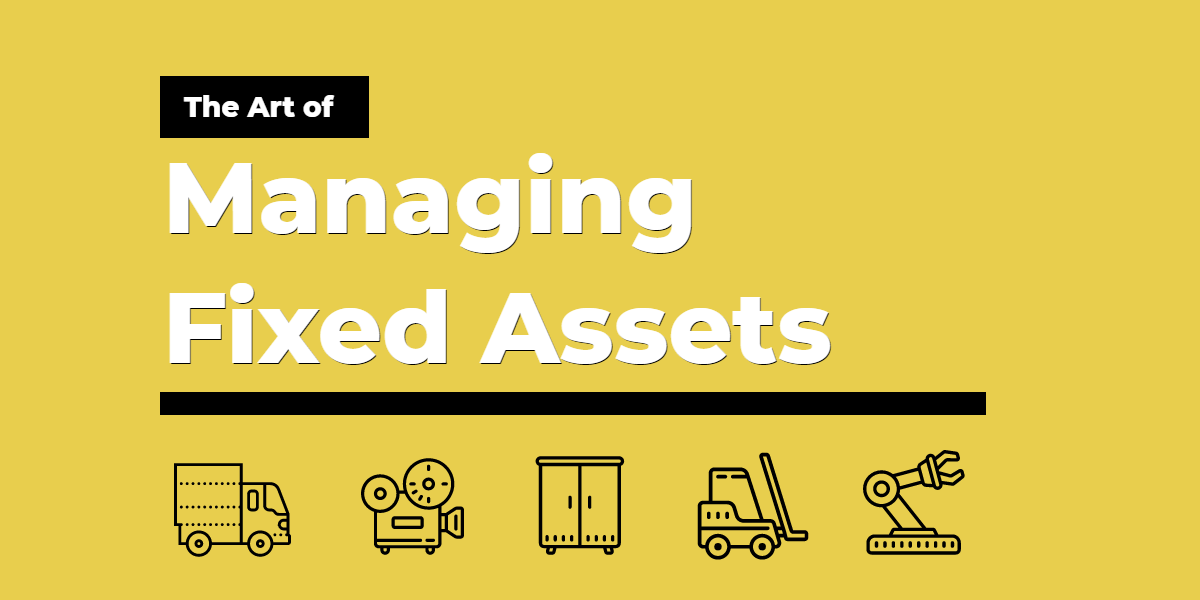Assessing the role of fixed assets in an organization
Categorized as long-term tangible property, fixed business assets are mainly used to generate income.
Along with this, such assets and equipment can be used for the production or supply of goods and services or even rental to third-party organizations.
Following this description, fixed assets are typically reported in the balance sheet under property, plant, and even equipment. Let’s just briefly go over how these assets are utilized for business operations.
To start off, the purchase of an asset represents cash outflow for the organization. And if the value of a particular fixed resource falls below its net value, then that asset is subjected to an impairment write-down.
Moving on, once tools reach the end of their lifetime, they can be disposed of by selling them at their salvage value.
On the other hand, if the assets become obsolete, then they have to be disposed of without receiving any payment in return.
Once you learn to treat fixed business assets in the correct manner, you will start to realize why it’s important to do so.
First, data about your corporation’s assets enables you to generate accurate financial reports, business valuation, and thorough analysis.
These documents act as credibility proof for investors and help them to decide whether to lend money to the organization or not.
All this is particularly critical for capital-intensive firms which require large investments in property, plant, and equipment.
Why should you implement an automated solution for fixed business assets?
The majority of organizations struggle when choosing the right type of asset management system. Due to high operational efficiency, cloud-based programs remain popular amongst both small and medium businesses.
Opting for a management software lets you avail the following benefits:
- Improved security: Companies face aggressive scrutiny from regulatory bodies and government agencies. To maintain credibility, firms should be able to provide transparent financial records. Asset management software enables you to store and track data easily. This enables users to mitigate the likelihood of human error. This way you have an accurate depiction of available resources and their financial value for compliance regulations.

- Streamlined budgeting: When it comes to dealing with fixed business assets, there are huge finances involved. For this reason, extra care should be taken to prepare the budgets, track rate of returns and costs. By defining certain asset traits like depreciation rates, users can estimate equipment lifespans. Having accurate insights prevents firms from overstocking and tying up resources unnecessarily.
- Centralized platform: Fixed asset management software serves as a centralized platform to record all asset updates. With a single database, all users can instantly view tool activities and monitor them simultaneously. Such practices improve collaboration and initiate constructive communication between the teams. Moreover, a reliable information system eliminates the need for multiple programs to overlook different assets.
Read more: Five Tips for a Fixed Asset Manager
Using a cloud based system to best manage your fixed assets
Asset management software offers various capabilities for an organization. Its multifaceted nature makes it a popular tool in achieving the desired asset outcome levels.
Since fixed business assets are vital to both daily operations and long-term goals, their maintenance and reliability should be a top priority. So, how exactly does a cloud based software help you fulfill all these functions?
Here are some features which prove that cloud based fixed asset system is a good investment:
A. Lifecycle Management
Fixed resources owned by a company are the assets used for long-term like buildings, furniture and fixtures. Such assets require constant monitoring to ensure they remain in optimum condition at all times.
To do so, fixed management software enables you to track each and every asset from the moment of its procurement to disposal.
This process is made simple with the help of barcodes which let you monitor activities and record real-time data.
Detailed insights into the asset lifecycle enable you to identify potential issues and schedule items for maintenance in due time.
Life cycle management can be further broken down into:
- Asset accounting
- Asset tracking
- Contract management
- Item classification
- Materials allocation
- Parts reservations
Read more: Fixed Asset Accounting: Overview and Best Practices
B. Inventory Tracking
To maintain seamless daily functions, it is critical for companies to ensure there is an undisrupted supply of goods. But the key here is to gain a balance between overstocking and understocking.
This is essentially important for fixed assets as they require hefty funds and extensive budgeting. For this purpose, a cloud-based system lets you utilize inventory modules and automate the entire process.
You can start by documenting usage history which gives an estimate of how long before a certain product needs a replacement. Then consequently, by following this rule you can set minimum threshold levels.
Once this limit is reached, purchase orders will be automatically created.
To carry out all this procedure, the following metrics are tracked by the software:
- Supplier information
- Stock level indicators
- Inventory transfers
- Stock substitutes
- Cycle counting
- Multi-warehouse management
C. Preventive Maintenance
Robust maintenance is about making sure all assets function properly and have a prolonged lifespan. This is extremely important for seamless business operations.
But where do you start? The answer is to invest in a software program for asset management. Such a system comes equipped with features which lets you schedule preventive maintenance as soon as new stock is procured.
Along with this, you can also define recurring service sessions to ensure none of the equipment gets missed out on.
Such a practice is quite beneficial for fixed business assets as they are long term investments which need frequent repair and maintenance with time.
For maximizing the value of assets, the software records the following aspects:
- Regulatory compliance management
- Fault tracking
- Warranties and licenses
- Manufacturer/vendor details
- Third party integrations
- Service history
Conclusion
By reinvigorating fixed asset management, organizations can hope to achieve their yearly goals in an effective manner.
However, this needs constant commitment, feedback and most importantly, constructive analysis. To maintain consistency, the majority of firms opt for a cloud-based management system.
Such software offers excellent features to track asset activities and optimize utilization. These mainly include lifecycle and inventory management and preventive maintenance.
In addition to the above, fixed asset tracking software enables you to access the app on-the-go and integrate with third-party solutions. Now, this comes in extremely handy while dealing with off-site business projects.
Here the users simply can update information using their smartphones and keep everyone in the loop. This way no critical data gets missed out on.
And lastly, third-party integrations enable companies to merge data from multiple forums to generate insightful performance reports.
This gives companies a chance to closely overview progress and seek potential areas for improvement. Data analytics boost the rate of return on investment (ROI) and help prolong asset lifespan as well.
About EZOfficeInventory!
EZOfficeInventory is the leading fixed asset tracking software. It enables you to track the depreciation, location and maintenance status of your fixed assets along with offering many other intuitive features.







